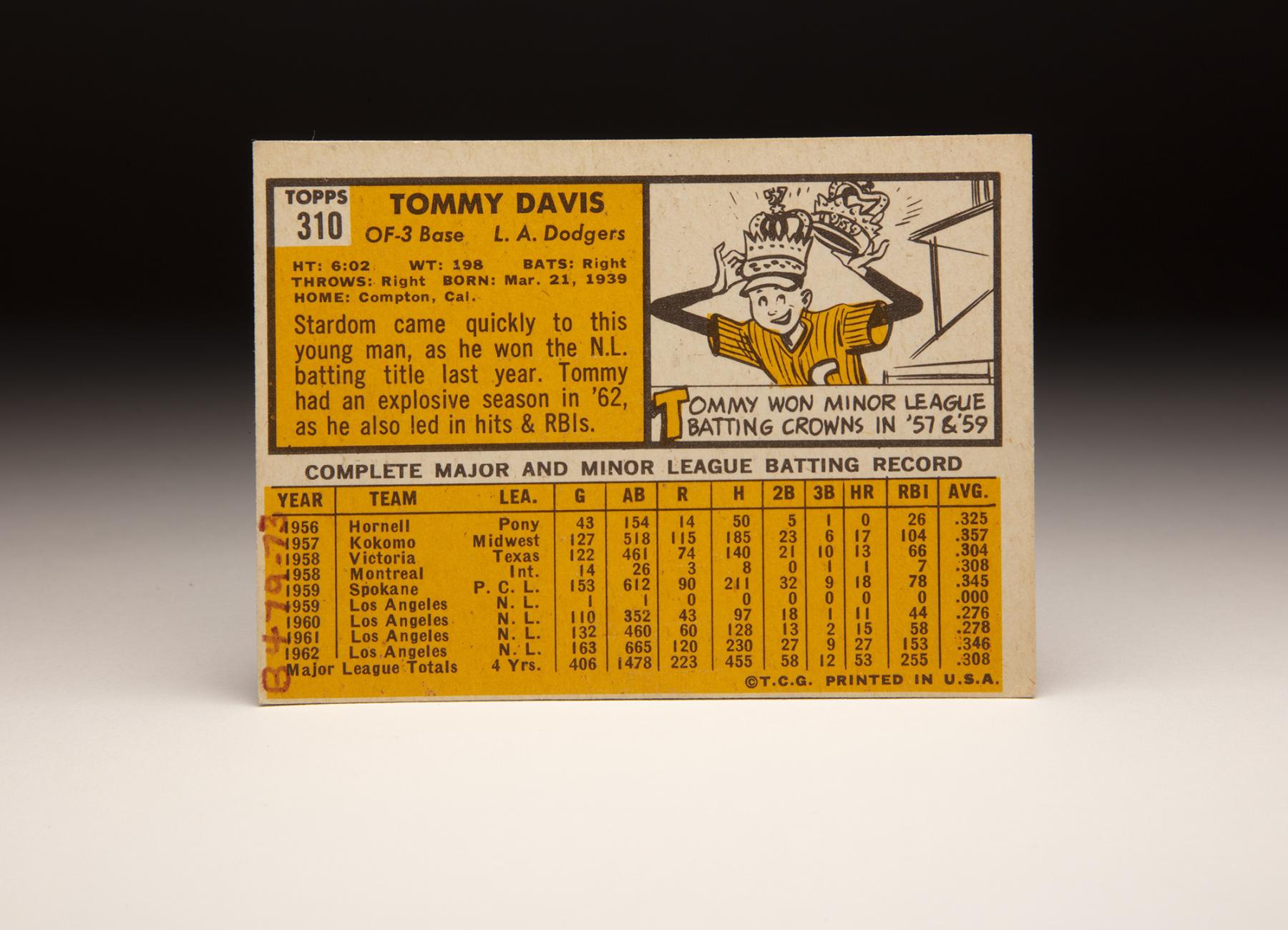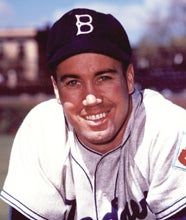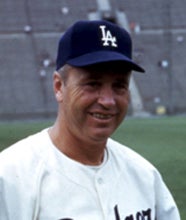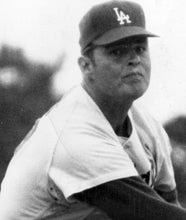- Home
- Our Stories
- #CardCorner: 1963 Topps Tommy Davis
#CardCorner: 1963 Topps Tommy Davis
Of all the “best that never was” teams in baseball history, the 1962 Los Angeles Dodgers might be my favorite.
And Tommy Davis’ 1962 season was the muscle behind that moniker.
Hall of Fame Membership
There is no simpler, and more essential, way to demonstrate your support than to sign on as a Museum Member.
Flipping through any baseball encyclopedia in the pre-internet days, it was easy to stop and stare at that Dodgers team. Maury Wills stole 104 bases that year, breaking Ty Cobb’s longstanding modern era record. Don Drysdale was 25-9 en route to the Cy Young Award, and the Dodgers drew a record 2.7 million fans in their first season at Dodger Stadium.
But it might have been Davis – who drove in 153 runs while winning the National League batting crown with a .346 mark – who stood out the most. At 23 years old, he was one of the game’s brightest stars.
Born March 21, 1939, in Brooklyn, Davis grew up a Dodgers fan and starred as a high school athlete, drawing interest from big league scouts. Following a phone call from Jackie Robinson, Davis signed with the Dodgers in 1956 and was sent to Class D Hornell of the Pennsylvania-Ontario-New York League, where he hit .325.
After hitting .357 with 68 stolen bases for Class D Kokomo of the Midwest League in 1957, Davis played in Double-A and Triple-A in 1958, hitting a combined .304. In 1959, Davis hit .345 with 211 hits in 153 games for Triple-A Spokane – leading the Pacific Coast League in batting average – before the Dodgers called him up in September.
By the time Spring Training of 1960 was over, Davis had made the Dodgers’ roster while being named the favorite by many writers to win the NL Rookie of the Year Award. He hit .276 in 110 games that season as an outfielder and pinch hitter, finishing fifth in Rookie of the Year voting. Then in 1961, Davis split time between the outfield and third base, hitting .278 in 132 games.
In 1962, Duke Snider started the season as the Dodgers’ right fielder and clean-up hitter. But after about a week, Dodgers manager Walter Alston began to tinker with his lineup. Davis encouraged these changes with his play – driving in 13 runs in five games from April 13-17. By the end of April, Frank Howard was in right field and Davis – who had 24 RBI in the season’s first month – was entrenched in left.
In May, Davis and Dodgers got red hot. Davis hit .336 with 25 RBI and 25 runs scored in 28 games, leading the Dodgers to a 21-7 record.
In July, the Dodgers went 20-6 as Davis hit .398 with 25 RBI and 26 runs scored.
By the end of July, Davis had already amassed 106 RBI. The Dodgers were 71-35 heading into their Aug. 1 game against the Pirates, but the San Francisco Giants were a mere four games back of that blistering pace.
The Dodgers kept the Giants at bay for most of August and September, but eight losses in the final 10 games – including a sweep at the hands of the Cardinals in the season’s final series – left Los Angeles and San Francisco in a dead heat at 101-61.
The teams split the first two games of the three-game playoff. In Game 3, Davis’ two-run homer in the sixth inning gave the Dodgers a 3-2 lead – and Los Angeles increased its advantage to 4-2 in the seventh. But in the top of the ninth, the Giants scored four runs on only two singles – aided by four walks, an error and a wild pitch – to win the pennant.
Davis’ final numbers for 1962: 27 home runs, 153 RBI, 230 hits and 356 total bases. He finished third in the NL Most Valuable Player voting – an award that went to Wills. And while it may have appeared that Davis was massively benefiting from Wills’ record-setting performance on the base paths, consider that the Dodgers player Davis drove home the most was Junior Gilliam, who scored runs on 37 of Davis’ RBI. Wills was third on that list with 29 runs scored, with Willie Davis scoring 33 times via Tommy Davis’ RBI.
The next season, Davis won his second batting title with a .326 mark while driving in 88 runs. This time, the Dodgers won the NL pennant and then swept the Yankees in the World Series, with Davis batting .400 (6-for-15) with two triples and two RBI.
Davis endured an off year in 1964, hitting .275 with 86 RBI – but he still received some support in the NL MVP voting, finishing 22nd. But his career was forever altered 17 games into the 1965 season when he slid awkwardly into second base while trying to advance on a force out. He fractured his ankle on the play and appeared in only one game the rest of the season – as a pinch hitter in the final game of the year.
“I was a little indecisive in my slide and my spikes caught,” Davis told the Oakland Tribune. “When I looked for my ankle, it was in right field.”
Davis returned in 1966 and hit .313 over 100 games, but he totaled only 15 extra base hits en route to a .383 slugging percentage. The Dodgers won their third NL pennant in four seasons, but Los Angeles lost in the World Series to the Orioles – and Davis was dealt to the Mets on Nov. 29.
He bounced back with a solid season in 1967 in New York, hitting .302 with 16 homers and 73 RBI as the Mets’ everyday left fielder. But from 1967-76, Davis played for nine teams in 10 years – becoming a hired bat for contending teams before getting regular work as a designated hitter starting in 1973.
The Mets traded him to the White Sox following the 1967 season, receiving two key Miracle Mets pieces in return: Tommy Agee and Al Weis.
The White Sox lost Davis in the Expansion Draft when the Seattle Pilots grabbed him prior to the 1969 season, and the Pilots traded Davis to the Astros on Aug. 30, 1969.
From 1970-76, Davis bounced from the Astros to the Athletics to the Cubs back to the A’s back to the Cubs then to Baltimore, where he spent three productive seasons as the Orioles’ DH. He found work with the Angels and Royals in 1976, helping Kansas City win its first AL West title after the Royals purchased his contract on Sept. 20 of that year.
Ineligible for the postseason due to his post-Aug. 31 acquisition, Davis was released by the Royals on Jan 17, 1977. After 18 seasons in the big leagues, Davis called it a career.
He finished with 2,121 hits in 1,999 big league games, including a .294 batting average and 1,052 RBI. He passed away on April 3, 2022.
Davis was one of only 11 players to hit .296 or better during the pitching-rich seasons of 1960-69, and of those players only eight – Hank Aaron, Dick Allen, Roberto Clemente, Al Kaline, Willie Mays, Tony Oliva, Frank Robinson and Davis – had at least 100 home runs in that span.
Playing in an offensively suppressed era, Davis’ final totals were dragged down by strong pitching, a cavernous home ballpark in Dodger Stadium and a debilitating injury. But few players ever shined as bright as the Brooklyn-born outfielder who found a home in Los Angeles.
Craig Muder is the director of communications for the National Baseball Hall of Fame and Museum
Related Stories
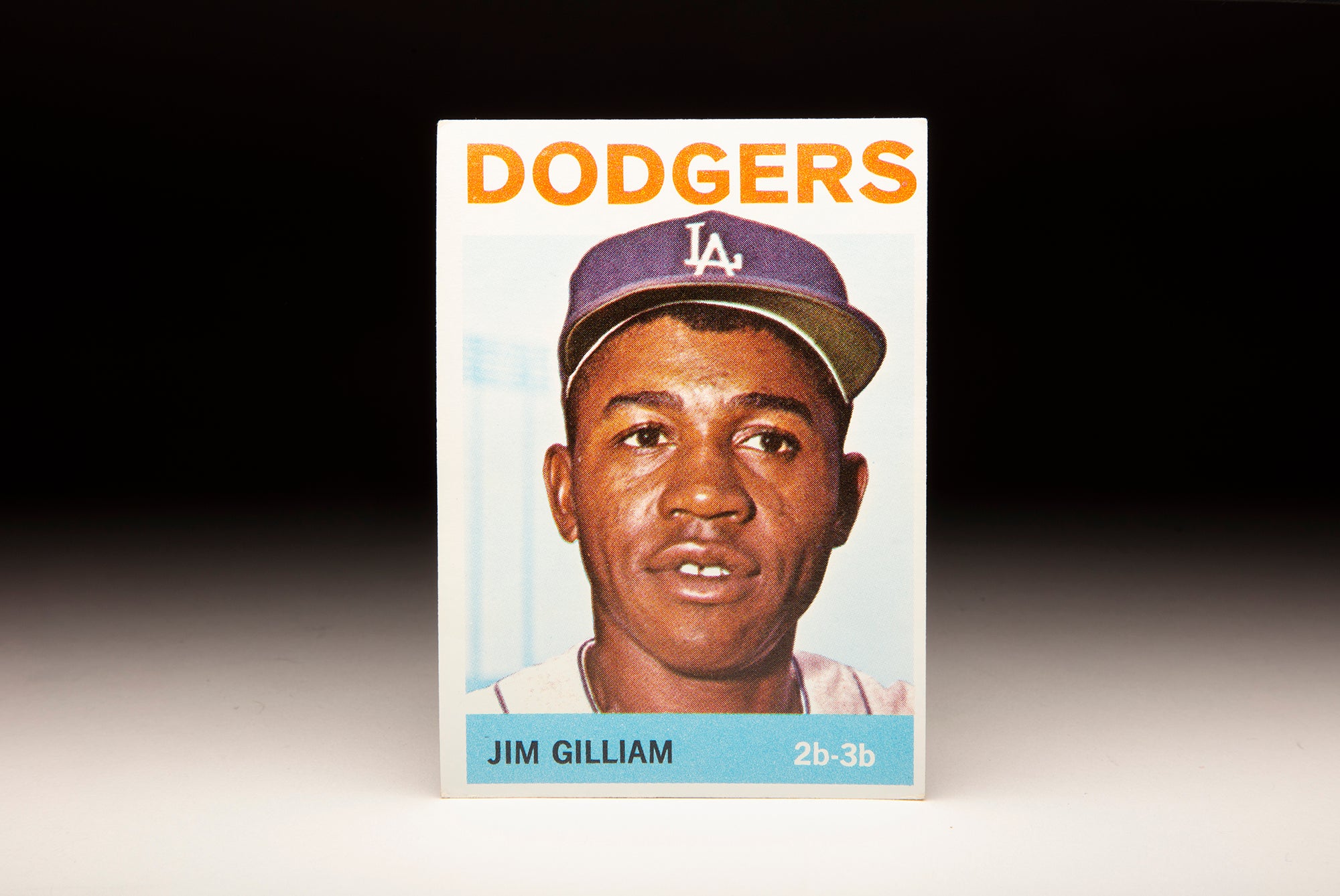
#CardCorner: 1964 Topps Jim Gilliam
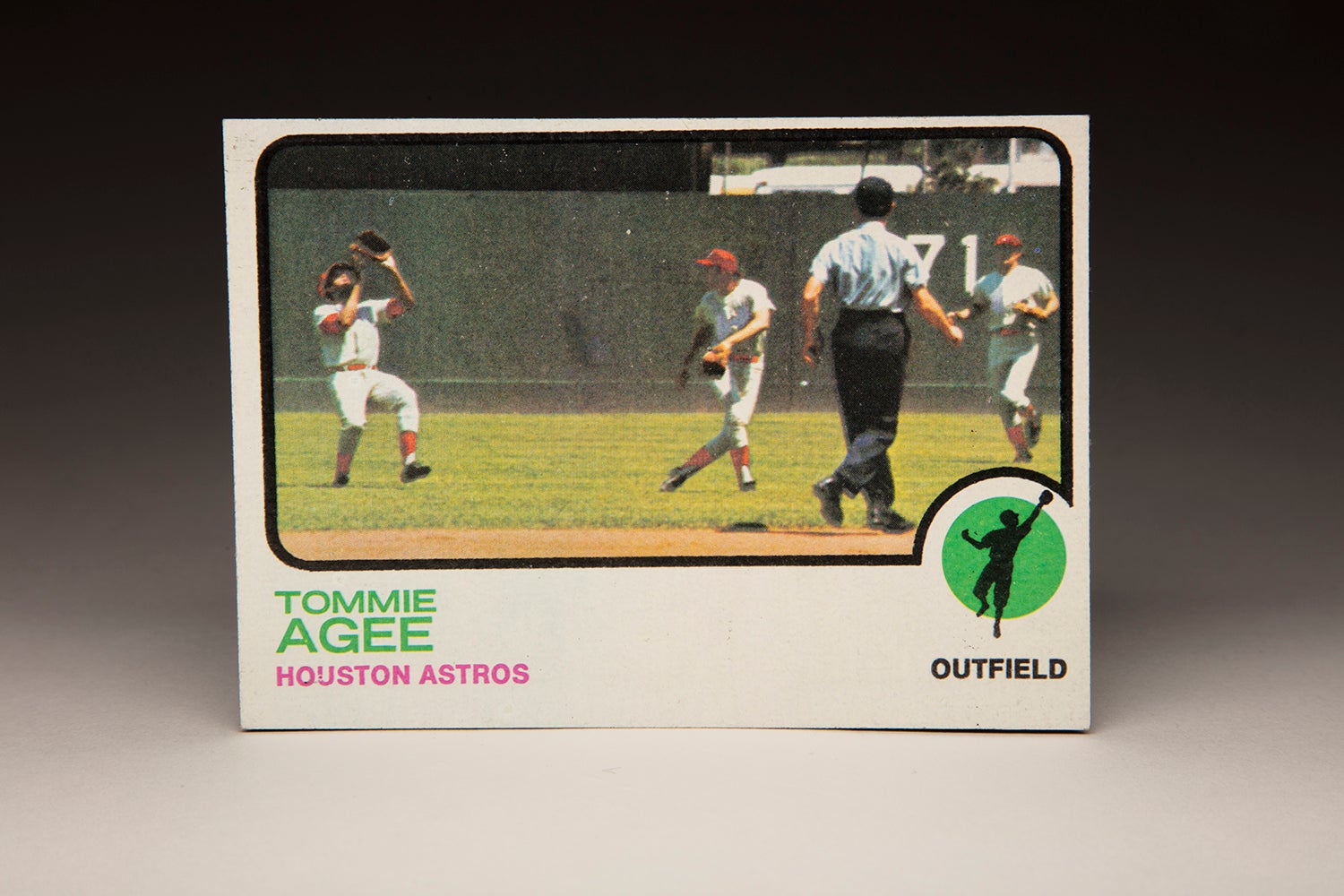
#CardCorner: 1973 Topps Tommie Agee
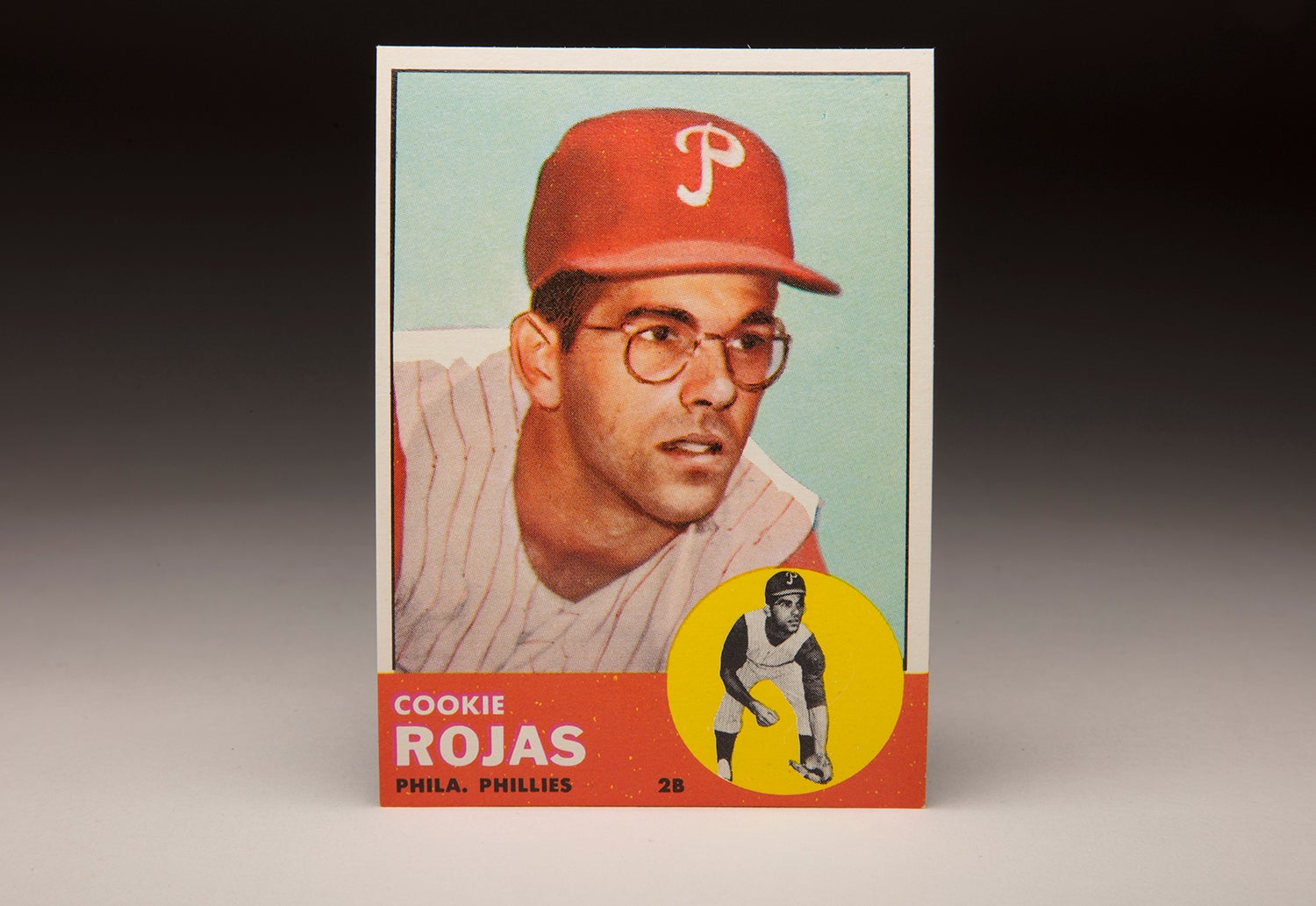
#CardCorner: 1963 Topps Cookie Rojas
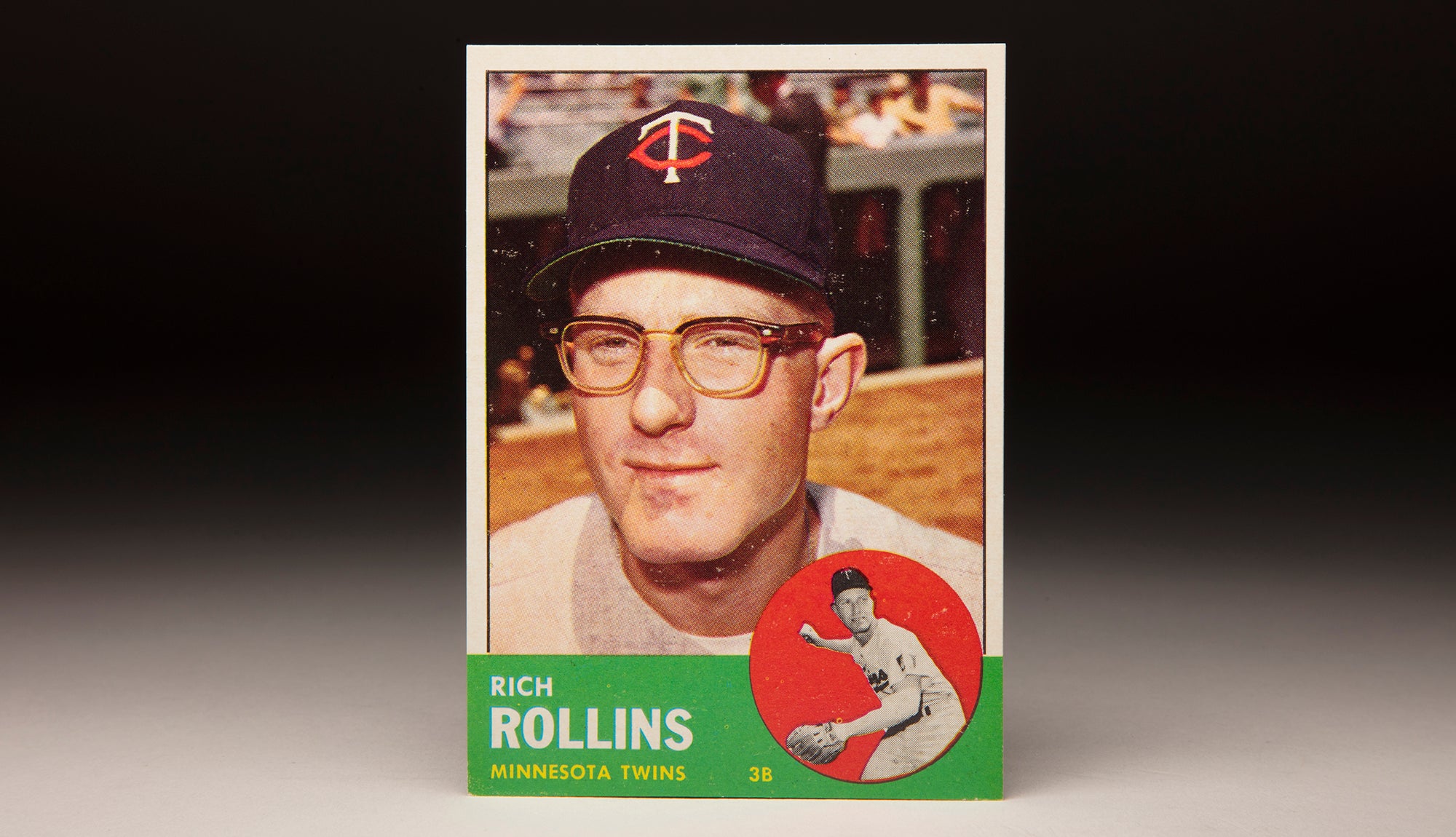
#CardCorner: 1963 Topps Rich Rollins

#CardCorner: 1964 Topps Jim Gilliam

#CardCorner: 1973 Topps Tommie Agee

#CardCorner: 1963 Topps Cookie Rojas



